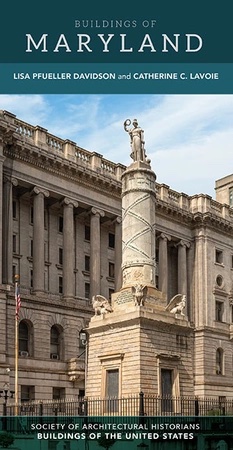Lying at the base of South Mountain is Burkittsville, a quintessential nineteenth-century western Maryland crossroads town. It was created in the early nineteenth century, providing needed services for the local agricultural community, and even today remains surrounded by farmlands. Neighbors Henry Burkitt and Joshua Harley sought to take advantage of their location at the intersection of two primary thoroughfares that included Gapland Road, one of the few mountain crossings. Burkitt commissioned a town survey c. 1829, and Harley opened the first general merchandise store and post office combined with a residence, still remarkably intact (c. 1820; 2 W. Main Street). Bearing striking similarity is the former house and tavern (c. 1815; 1 W. Main) that catered to early travelers before operating as a residence and general store from c. 1840 to the early 1980s.
The town included a wide range of light industries along its outskirts. Michael Weiner purchased the tannery established by Joshua Harley, adding blacksmith, cooper, wheelwright, pottery, and carpentry shops. Only a section of the brick and stone tannery office remains, now at the center of 111 W. Main, and Weiner’s Federal-period house (1846; 109 W. Main). Reverend Emmanuel Slifer operated a tailor shop in the small building adjacent to his house (c. 1821, c. 1845; 1 and 3 E. Main), and Casper Pfeiffer had a cobbler shop attached to his house (c. 1859; 200 E. Main). Behind George Ennis’s distinctive stone house is a log building, likely his blacksmith shop (c. 1805; 198 E. Main). German roots are manifested by the town’s German Reformed Church (1830–1831, 1860) at 3 E. Main and the German Lutheran Church (1859) at number 5. The former is now home to the South Mountain Heritage Society.
Post-Civil War, such picturesque houses were erected as that of house carpenter Thomas Karn (c. 1873; 105 W. Main), and two brick Italianate-influenced houses (c. 1870; 100 W. Main and 3 E. Main), as well as St. Johns Chapel (1896) and Rectory (c. 1870) at 101 W. Main.
Industry died out in the post-World War II era and by the end of the century, commercial development had as well, leaving Burkittsville a primarily residential community, yet retaining its character and vibrancy. Burkittsville is also significant as the scene of the September 1862 Civil War Battle of South Mountain.
Writing Credits
If SAH Archipedia has been useful to you, please consider supporting it.
SAH Archipedia tells the story of the United States through its buildings, landscapes, and cities. This freely available resource empowers the public with authoritative knowledge that deepens their understanding and appreciation of the built environment. But the Society of Architectural Historians, which created SAH Archipedia with University of Virginia Press, needs your support to maintain the high-caliber research, writing, photography, cartography, editing, design, and programming that make SAH Archipedia a trusted online resource available to all who value the history of place, heritage tourism, and learning.

